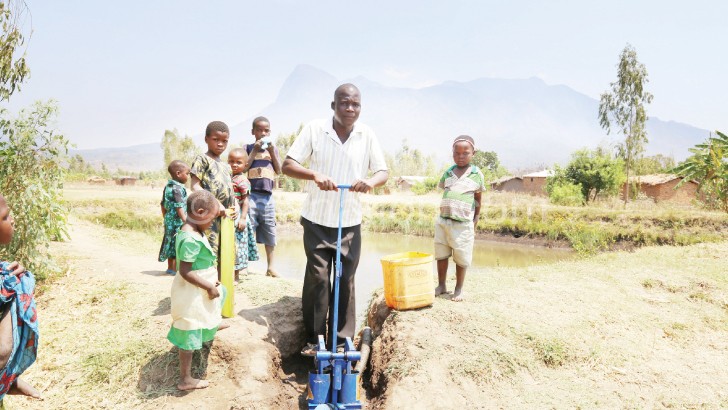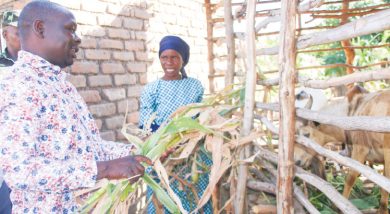Phalombe flood victims saved by irrigation
Malawi regularly experiences natural disasters, particularly drought and floods. According to the World Bank, the floods affects about 26 000 people yearly and reduces the gross domestic product (GDP) by about 1.7 per cent annually.
About 86.2 percent of the population is in rural areas. During the rainy season the country is prone to flash floods, making hard to reach areas even harder to reach.
Since January 2015, southern districts of Malawi such as Chikwawa, Nsanje, Phalombe and Zomba experienced above-normal rains, which led to flooding.

Updates on joint situation reports by the UN Resident Coordinator (UNRCO) and Department of Disaster Management Affairs (DoDMA) indicate that 230 000 people were displaced by the floods.
The situation prompted President Peter Mutharika on January 13 this year to declare a State of Emergency in Nsanje, Chikwawa, Phalombe, Zomba, Blantyre, Chiradzulu, Thyolo, Mulanje, Balaka, Machinga, Mangochi, Ntcheu, Salima, Rumphi and Karonga districts.
Against this background, the Catholic Development Commission in Malawi (Cadecom) embarked on a six-month Central Emergency Relief Fund 3 (CERF 3) with funding from the Food and Agriculture Organisation (FAO) and a five-year Australia Africa Community Engagement Scheme (AACES) projects in Phalombe.
CERF 3 project coordinator in Phalombe, Charles Namikalo, says the project was aimed at ensuring minimum food availability to 5 000 vulnerable households in the district through agricultural input distribution, while promoting basic methods of conservation agriculture and climate smart agriculture.
Namikalo says the project received 2 000 bags of Urea fertilisers, 1998 bags of NPK fertiliser, 2 000 packets of maize seed, 2 000 packets of bean seed and other assorted vegetable seeds.
“To ensure successful crop production by households affected by floods in Phalombe, all community-based trainings in the project design document such as small-scale irrigation, modern agriculture practice and sustainable smart agriculture, seasonal planning and climate management, pre- and post-harvest handling and storage were conducted to lead farmers, selected project beneficiaries and some local leaders,” said Namikalo.
Apart from the capacity building of farmers, Namikalo also indicated that the project has so far received 965 goats which are distributed to 965 households and are waiting to be supplied with a further 285 goats before the end of the project.
“The project also received 15 Livestock Drug Boxes which were distributed to farmers and of course goat management and para-vet trainings were conducted to livestock beneficiaries and identifies Para Vets,” he said.
Winess Bisani, secretary for Mleka Irrigation Scheme in Traditional Authority Nazombe in Phalombe east, said the interventions under CERF 3 project have tremendously reduced effects of floods that hit the district.
“We thank Cadecom for the knowledge and skills on how to sustain our lives following the devastating floods that we experienced as a district. The membership of our scheme is 106 and we have 10 hectares which we use for irrigation farming. We grow assorted crops, including maize, tomatoes, onion, beans and cabbage,” explained Bisani.
Modester Elia, a member of the scheme, says the scheme membership has 64 women and 42 men. According to her, members are able to make money from selling the crops.
“For example, I earned about K38 500 ($67.06) from vegetable sales, which is not small change in the village,” says the 45-year-old.
Elia says she has eight children and she is able to pay school fees for her three secondary school children.
“This would not have been possible if it were not for irrigation farming,” she says.
Cadecom national programmes coordinator Yusuf Mkungula applauded Phalombe communities for their hard work which made the project a success within a short time.
Mkungula said the project has also helped marginalised communities to enhance their quality of life through improved food security and access to water, sanitation and hygiene services.
He said in traditional authorities Chiwalo and Nazombe in Phalombe, at least 3 500 households, including 422 people with disabilities, benefited from the project.
Phalombe district agriculture division officer (Dado) said during a review meeting of the two projects that the CERF 3 project has had great impact.
“We appreciate efforts rendered by Cadecom because they did not implement all their projects in isolation but involved other stakeholders,” he said.
FAO disaster risk reduction and resilience coordinator Aubrey Sidik also commended Cadecom for successfully implementing CERF 3 project. He pledged to continue supporting CERF 4 which will have a similar approach as CERF 3. n





